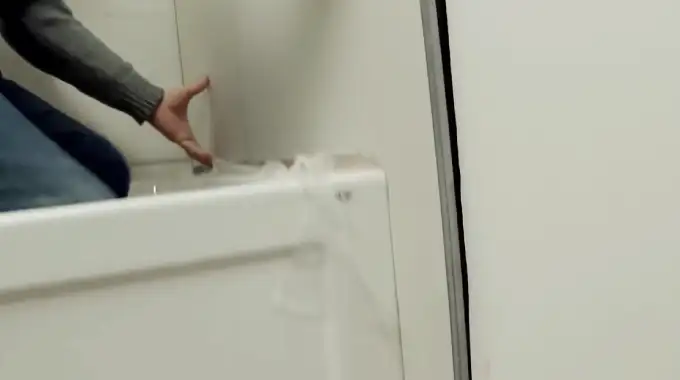Last Updated on January 11, 2023
Most people know that wet areas in bathrooms need special types of materials to prevent the growth of bacteria. But what about drywall? Can you use regular drywall in a bathroom, or do you need to use a special waterproof variety?
The answer may surprise you. While regular drywall is not technically waterproof, it is highly resistant to moisture. This means that it can withstand the occasional splash from the shower or sink in your bathroom without suffering any damage.
Regular drywall is also easier to install than special waterproof varieties in a bathroom, making it a good choice for DIYers. You just need some extra work to ensure your drywall is properly sealed and protected from water and humidity. Let’s look at how you can do this.
How Can You Use Regular Drywall in a Bathroom?
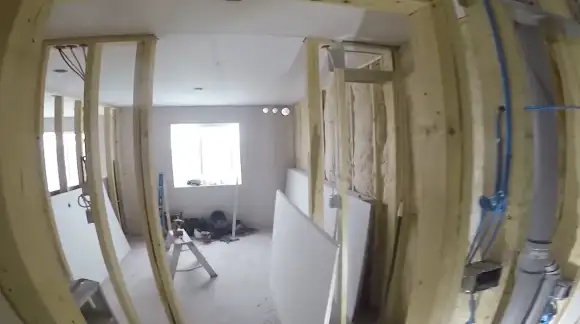
Most people don’t think you can install regular drywall in a bathroom. The main reason people think this is because bathrooms are high-moisture areas.
But if you take the proper precautions, you can use regular drywall and have it last just as long as any other room in your house. Here are the full steps you need to take:
01. Use Waterproof Joint Compound
Drywall mud (skim coat), or waterproof joint compound, plays an important role in this process. This will prevent the moisture from seeping into the walls and causing the drywall to break down over time.
To apply the joint compound, use a putty knife or trowel to spread it in an even layer on the wall. You can also use a paint roller to ensure the joint compound is spread evenly. This will further protect the drywall from water damage.
And don’t forget to go over the corners and edges with a thin layer of waterproof joint compound for extra protection.
02. Apply Moisture-Resistant Paint
Once you have coated the drywall with a waterproof joint compound, it is time to apply some moisture-resistant paint. The best type of paint to use for this purpose is oil-based exterior paint.
To prepare the drywall for painting, you must sand down the surface to create a smooth finish. Once the drywall is sanded, you can apply a layer of primer that will help the paint to adhere better and also prevent peeling and cracking.
Once the primer is dry, you can apply moisture-resistant paint designed for use in bathrooms. This type of paint will help to protect the drywall from moisture and humidity, keeping it looking new for longer.
03. Use Waterproof Caulk or Sealant
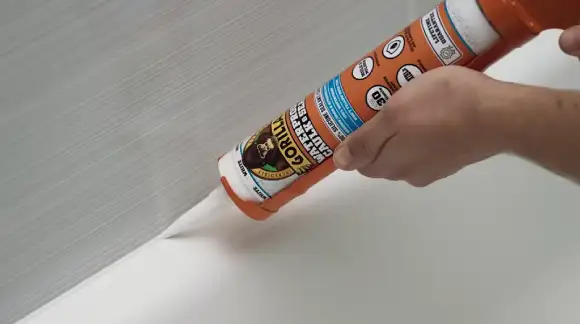
Once the paint is dry, it is important to use waterproof caulk or sealant around any plumbing fixtures like your shower, sink, and toilet. This will help to ensure that no water seeps into the walls and causes harm.
To use the caulk or sealant, simply run a bead along the base of each plumbing fixture and any other areas that could potentially be exposed to water. Make sure to smooth out the caulk or sealant with a wet finger as you go to ensure a tight fit.
04. Install an Appropriate Baseboard and Trim
To ensure your drywall will last in a bathroom is to use a baseboard and trim that is appropriate for the room. This should be made from a waterproof material such as plastic, vinyl, or ceramic tile.
You can do this yourself by measuring the room and cutting the baseboard and trim to size. Then, use construction adhesive to attach it to the wall. This will provide an extra layer of protection for your drywall by protecting it from water.
05. Add a Moisture Barrier If Necessary
Sometimes, you may want to add an extra layer of moisture protection with a moisture barrier. This will help keep any water from the shower or sink from damaging your drywall.
A typical moisture barrier should be made of foam board or plastic sheeting and installed between the studs and the drywall. Make sure to seal all the seams with caulking and use insulation tape on any joints that may be exposed to water.
06. Consider Installing Ventilation Fans
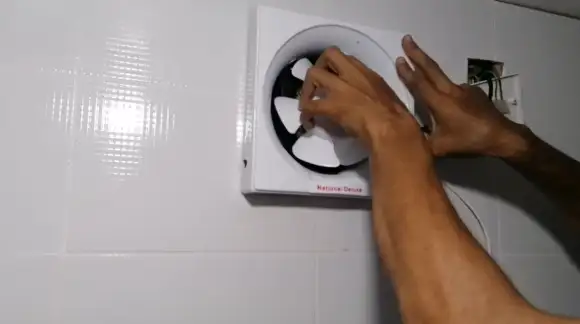
Finally, you should also consider installing ventilation fans in the bathroom. This will help to reduce the amount of moisture and humidity in the room, which can cause mold and mildew to form.
To install a fan, you need to cut an opening in the drywall and mount the fan securely to a joist with screws. Then, make sure to caulk any seams around the fan to further prevent moisture from entering the wall.
By taking these steps, you can use regular drywall in your bathroom, knowing it will be protected from water penetration. Just make sure to do your research and follow these tips properly to ensure the best results.
Topics of Interest: How can I install stacked stone on painted drywall?
What Should I Put Between Regular Drywall and a Shower?
You can use mesh tape, joint compound, and waterproof paint to create a barrier between regular drywall and a shower.
- Start by applying a layer of mesh tape along the edges where the drywall meets the shower.
- Next, you will want to pre-fill the gap with hot mud (setting compound). Once the gap is filled, you can begin taping it off with mesh tape.
- Then, you can apply a layer of joint compound over the mesh tape to create an even, water-resistant seal.
- Finally, you will want to coat the area with moisture-resistant paint and caulk any seams or joints with waterproof caulking. This will help prevent moisture from getting into the regular drywall and causing damage.
Do You Need To Waterproof All Drywalls in a Bathroom?
Yes, it is important to waterproof all regular drywalls in a bathroom. This will help protect the drywall from deterioration due to moisture, humidity, and other elements.
Even if you use water-resistant drywall, you will still need to cover it with a waterproof membrane. The main reason for this is that regular drywall is not airtight, so water can still seep through any cracks or gaps.
A waterproof membrane will provide an additional barrier against water infiltration. There are many different types of waterproof membranes available on the market, so be sure to do your research to find the best one for your needs.
The following are some of the most popular waterproof membrane materials for drywall:
Waterproof Primer & Sealer: This is a specially formulated primer that can be applied to drywall before painting. It will create a barrier against moisture and help reduce the chances of mold or mildew forming on the walls.
Water-Based Siloxane Sealer: With this sealer, you can coat the drywall with a protective layer that is water-resistant and breathable. This will help keep moisture out while allowing air to circulate through the walls.
Penetrating Water Sealant: This sealant penetrates deep into the drywall, creating a waterproof barrier that can protect against water infiltration.
By using one of these materials to waterproof all your regular drywalls in a bathroom, you will be able to minimize the risk of deterioration while maximizing the longevity of your walls.

How Thick Should Regular Drywall Be Put In Bathrooms?
If regular drywall is used in bathrooms after waterproofing, it needs to be thicker than what is used in other house rooms. The extra thickness helps to prevent the drywall from being affected by moisture.
In most cases, 1/2 inch thick regular drywall should be used for bathroom walls and ceilings. If the bathroom receives a lot of water exposure, such as in a shower, then 1/4 or even 3/4 inch thick drywall may be necessary.
With proper installation, thick regular drywall can help to protect your bathroom from water spotting and make it last for a long time.
Should All Drywall in the Bathroom Be Green or Purple?
Both green and purple waterproof regular drywall can be used in bathrooms, depending on the level of moisture protection needed.
The regular green bathroom drywall is more resistant to water destruction than the purple one and should be used in areas where water is more likely to cause an issue. This includes showers, tubs, and areas near plumbing fixtures.
It’s important to ensure that those regular drywalls are prepared with waterproofing materials in both cases. Otherwise, they won’t be enough to protect your bathroom from deterioration.
Is Regular Drywall Ok For All Standard Bathrooms?
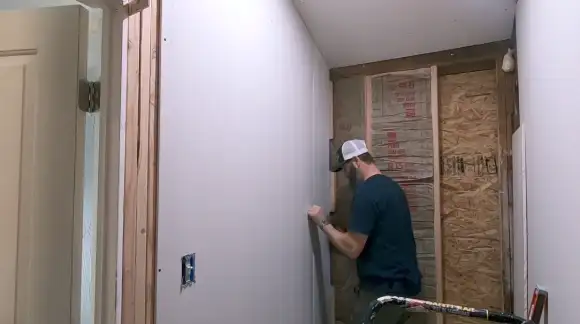
This depends on the level of moisture that will be present in your bathroom. If you don’t have a lot of water exposure, then regular drywall can typically be used without any issues.
But if you do have a lot of moisture or humidity in your bathroom, then it is good to use regular drywall by waterproofing with the best joint compound instead. This type of standard drywall will be much better at resisting water penetration and lasting longer.
By following our tips above and doing your research, you can rest assured that regular drywall can be safely used in your bathroom and provide lasting protection from water damage.
So if you’re looking to renovate your bathroom on a budget, regular drywall may be the way to go with some little extra precautions.
Topics of Discussion:
